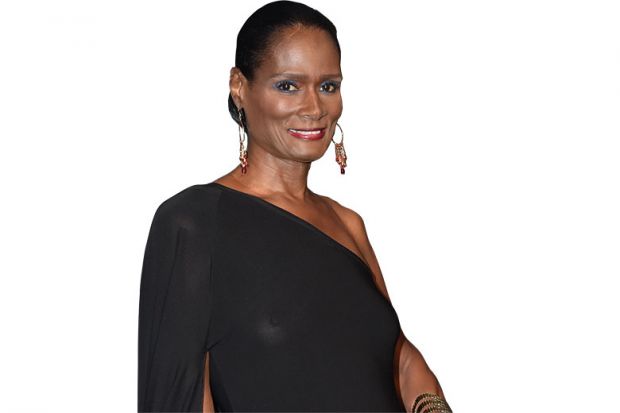In 1969, Caroline Jones, a trailblazing African American advertising executive, pitched a pioneering hair product to a personal care company called Clairol. The product was targeted at black women. Hair straightening for black women could be a painful and protracted process. But Clairol’s “Born Beautiful” range promised the gloss of a big brand and was intended to inspire customer confidence. Crucially, the campaign was fronted by an African American model called Tracey Norman. It’s her beautiful face that gazes out from the product packaging, her expression serene, her bouffant hair like a glorious crown.
The historian Elspeth Brown begins her study Work!: A Queer History of Modeling, with Norman’s story. No wonder – it’s a remarkable one. Norman had impeccable credentials, having been “discovered” by the photographer Irving Penn, and once posing for Italian Vogue at a rate of $1,500 a day. She had also been born a boy. Growing up as a gay teenager in New Jersey, she had taken feminising hormones and was a familiar figure in Harlem’s black drag ballroom culture (unforgettably documented in Jennie Livingston’s 1991 film, Paris Is Burning).
All this is to say that modelling is a queer business in every sense of that word. Brown’s exploration of it is fascinating: intelligent and unexpected in the turns that its analysis takes. This is no glib foray into celebrity culture, no superficial survey of supermodels. Brown is admirably uninterested in notions of a glamorous “backstage”. Modelling, she explains, is serious, “a form of labour in which the models and other cultural brokers transform subjective aspects of modern selfhood – gesture, appearance and presence – into immaterial goods”. As such, modelling becomes a focal point of modern culture, where the sexualised body meets the marketplace. Work! asks how modelling ignites consumer desire and how powerfully the notions of beauty it produces are gendered and racialised.
The notion of the model, Brown explains, is associated with prostitution in the early 20th century. This is important because “leasing a body” (to a photographer, a magazine or a brand) might have different implications if you’re a person of African heritage. The book places Irvin Miller’s “Brown Skin Models” revue next to the Ziegfeld Follies showgirls of the 1920s and 1930s, pointing up the commercialised performances of femininity and blackness. The model presents a body for inspection in the public sphere and, as Brown argues, it is a body that is always intersected by ideas of sex and race.
Moving into the 1940s and 1950s, Brown tracks the emergence of African American consumer marketing, black modelling agencies and specialist magazines. The light-skinned and platinum-haired Dorothea Towles peers back at us from the November 1959 cover of one such magazine called Sepia. She would become the first African American model to work for Christian Dior, too. As visions of black beauty became increasingly incorporated into mainstream culture, the black model posed questions around the authenticity of blackness, too.
Brown’s queer history is a strikingly original, non-normative telling of 20th-century culture. It’s a history that isn’t always focused and uncluttered, but it’s often determined in its recognition of how modelling, so often predicated on narrow notions of white, feminine beauty, has also shaped particular forms of trans and black experience.
Shahidha Bari is senior lecturer in Romanticism at Queen Mary University of London.
Work!: A Queer History of Modeling
By Elspeth H. Brown
Duke University Press, 368pp, £87.00 and £21.99
ISBN 9781478000266 and 9781478000334
Published 10 May 2019




